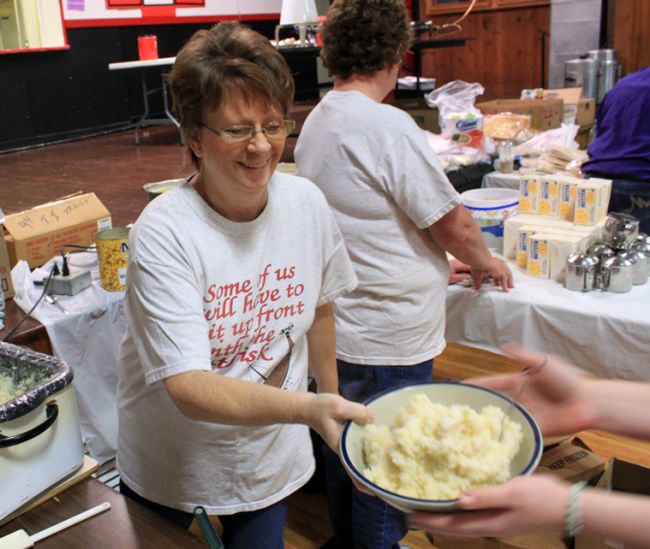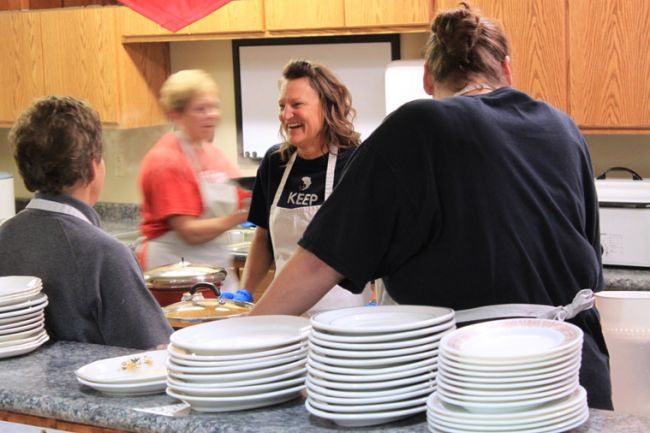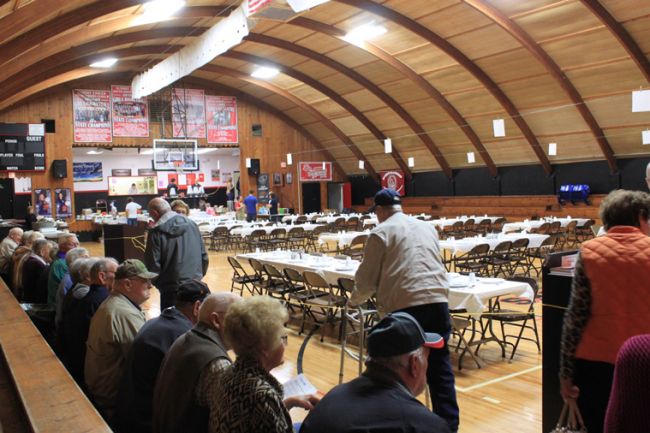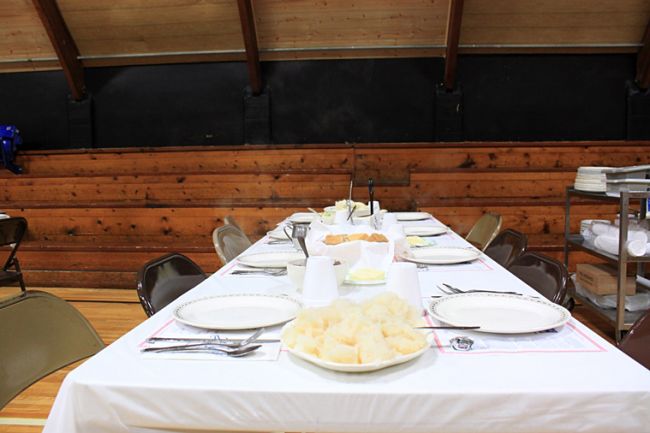The Gift of South Dakota
Subscriptions to South Dakota Magazine make great gifts!
Subscribe today — 1 year (6 issues) is just $29!
Cod is Love
Dec 2, 2015
 |
| Brenda Redlin makes sure the lutefisk feed runs swimmingly. |
Long ago, as buxom valkyries hurtled over the foggy shores of Úlfsjár, astride winged horses on their way to war, some ancestral peasant chef in the Nordic homeland discovered a method for rehydrating rack-dried fish with lye made from birch ash. The pungent pudding o' the sea that resulted must have been a hit. Centuries later, across the Atlantic, in the land that invented fish by the stick, people still come together for a viscous plate of lutefisk, all ashimmer with tradition.
Nobody knows exactly how the tradition began. Some have attributed the concoction to the Vikings. Maybe it was a lack of proper charcoal for lutefisk prep that drove the Nordic settlers to abandon Greenland. Either way, thanks to Scandinavian emigrants, the strange seasonal dish found its way to the New World.
Every winter at supper tables in Lutheran churches and community centers throughout the upper Midwest, volunteer cooks bring the custom — and the fish — to life, sometimes with a little lye, always with a tenacious love for their culinary heritage.
There may be no more dedicated group of lutefiskers than the women who keep the annual Summit Lutefisk Feed — which celebrated its 77th year on November 7 — going strong. Billi Whempner, Pam Neugebauer, Laurie Kneeland, Kathy Brink, Gretchen Wiste, Diane Knutson and Sheryl Steinocker have centuries of experience in the art. Most of them were preceded in the Summit community lutefisk kitchen by mothers or mothers-in-law or sometimes mother's mothers.
 |
| Everyone in the kitchen has a job. |
Organizer Brenda Redlin can't recall one origin story behind the dish, just snippets of "fairy tales" about Vikings and spoiled fish. The Summit tradition was started by the Hope Lutheran Church, then moved to the community center when it outgrew the church. The dinner helps raise a few dollars for the community center, but mostly serves as a fjord of sorts into Summit's ocean-deep inheritance of Norwegian culture.
"It's not a humongous money maker, but it's something where our whole community gets together and works together," Redlin says. "And you get so many people who come from other towns every year." Nearby Webster is one town that sends a bus of lutefisk aficionados annually. "It's just a good community thing to do."
"The ladies in the kitchen know how to make the fish, and they know how to make it good."
"The only way to get out is to die," says long time lutefisk chef Sheryl Steinocker. "It's kind of like a church committee. Once you're in it, you're in it."
 |
| Diners await their meal. |
Diane Knutson — an Armenian-Bohemian by birth, who married into the lutefisk game — agrees. "Once, you're on it, you're stuck. Cause nobody wants this job." Though it does have rewards. "We have a great group. All of us have been in here for quite a few years. Everybody has a spot. They come in. They take their place. We don't tell anybody what to do because they know what they have to do. It's very smooth."
Sheryl and Diane didn't grow up in lutefisk households. After she married a Norwegian, Sheryl acquired the taste, slowly. "Harold told me, what you do is take a tablespoon and mix it with your mashed potatoes and butter." The next year, two tablespoons and so on. "It takes you 10 years," laughs Diane. "I can eat it straight now," says Sheryl.
Preparation for the feed can start a couple weeks in advance, with the baking of the lefse, a Norwegian flatbread. Lefse makers around the community, boil, peel and rice potatoes with a potato ricer, then mix it into a dough and grill the lefse. This year Christina Brandsrud, Brenda Redlin's daughter, led a group of younger Summiters in learning lefse.
 |
| A finished table with lutefisk as the centerpiece. |
The fish preparation starts the day before the feed. A crew comes in to cut long pieces of cod into manageable portions, bundle them in cheesecloth and soak them overnight in salt water. They're able to skip a few steps because for decades now the Olsen Fish Company of Minneapolis has provided lutefisk that has already received the lye-reconstitution treatment. Diane recalls that before Olsen started skinning the fish, crews would spend nearly all night rolling the skin off from the tails up with hand-operated skinners.
On the day of the dinner, the bundles of fish are boiled in salt water until they reach the proper consistency. This is where years of experience come into play. A veteran chef knows the perfect level of tenderness by rote, with one stab of the fork.
The boiled fish has a gelatinous texture. Some have complained of an odor, maybe a throwback from the old days when the lye treatment was a DIY affair. There were no strong smells, or flavors, at the Summit feed, just the unshakeable bonds forged by a culinary tradition sailing ever forward, like the dragon's head on the bow of a Viking ship.
The holiday season brings many opportunities to try lutefisk for the first time or enjoy it once again. Find a lutefisk feed near you in our online calendar.
Michael Zimny is the social media engagement specialist for South Dakota Public Broadcasting in Vermillion. He blogs for SDPB and contributes arts columns to the South Dakota Magazine website.









Comments